AND
-
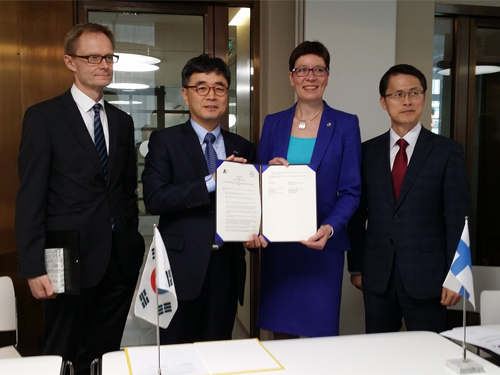 KAIST to Kick-Start the Exchange of Young Researchers with Northern European Universities
KAIST promotes research exchange and cooperation with three universities in Northern Europe.
KAIST has signed a letter of intent (LOI) for the mutual exchange of young researchers and cooperation to collaborate with KTH Royal Institute of Technology and Lund University, both based in Sweden on June 2, 2015, and with Aalto University in Finland on June 4, 2015.
This LOI was the result of the cooperative projects of Korea-Sweden and Korea-Finland Joint Committees on Science and Technology supervised by the Ministry of Science, ICT and Future Planning of Korea.
As agreed in the LOI, KAIST will conduct joint research projects with the three universities by providing students and researchers with opportunities to visit each other through internship programs and workshops and by sharing information on education and research.
Sung-Hyon Mayeng, the Associate Vice President of the International Relations Office at KAIST, said, “It’s an encouraging sign that universities and governments recognize the importance of increasing exchanges among academic and research communities. Expecting more vibrant relationships to be formed between KAIST and the three northern European universities in coming years, I hope that today’s agreement becomes a good basis to spur technological innovations that will not only benefit the regions but also the world.”
Established in 1827, the KTH Royal Institute of Technology is the largest and oldest technical university in Sweden, accounting for one-third of the nation’s technical research and engineering education capacity at university level. The university offers education and research programs from natural sciences to all branches of engineering including architecture, industrial management, and urban planning. According to the QS World University Rankings in 2014, KTH Royal Institute of Technology ranked 27th in engineering and 1st in Northern Europe.
Lund University, Sweden, is one of the oldest and most prestigious universities in northern Europe, consistently ranking among the world’s top 100 universities. In particular, its biological sciences and engineering have shown great strength, placing within the top 60 universities by the Times Higher Education (THE) World University Rankings. The university also receives the largest amount of research funding from the Swedish government.
Aalto University in Finland was created as a merger of three leading Finnish universities: the Helsinki University of Technology (established 1849), the Helsinki School of Economics (established 1904), and the University of Art and Design Helsinki (established 1871). The university nurtures the close collaborations across science, business, and arts to foster multi-disciplinary education and research.
2015.06.04 View 8586
KAIST to Kick-Start the Exchange of Young Researchers with Northern European Universities
KAIST promotes research exchange and cooperation with three universities in Northern Europe.
KAIST has signed a letter of intent (LOI) for the mutual exchange of young researchers and cooperation to collaborate with KTH Royal Institute of Technology and Lund University, both based in Sweden on June 2, 2015, and with Aalto University in Finland on June 4, 2015.
This LOI was the result of the cooperative projects of Korea-Sweden and Korea-Finland Joint Committees on Science and Technology supervised by the Ministry of Science, ICT and Future Planning of Korea.
As agreed in the LOI, KAIST will conduct joint research projects with the three universities by providing students and researchers with opportunities to visit each other through internship programs and workshops and by sharing information on education and research.
Sung-Hyon Mayeng, the Associate Vice President of the International Relations Office at KAIST, said, “It’s an encouraging sign that universities and governments recognize the importance of increasing exchanges among academic and research communities. Expecting more vibrant relationships to be formed between KAIST and the three northern European universities in coming years, I hope that today’s agreement becomes a good basis to spur technological innovations that will not only benefit the regions but also the world.”
Established in 1827, the KTH Royal Institute of Technology is the largest and oldest technical university in Sweden, accounting for one-third of the nation’s technical research and engineering education capacity at university level. The university offers education and research programs from natural sciences to all branches of engineering including architecture, industrial management, and urban planning. According to the QS World University Rankings in 2014, KTH Royal Institute of Technology ranked 27th in engineering and 1st in Northern Europe.
Lund University, Sweden, is one of the oldest and most prestigious universities in northern Europe, consistently ranking among the world’s top 100 universities. In particular, its biological sciences and engineering have shown great strength, placing within the top 60 universities by the Times Higher Education (THE) World University Rankings. The university also receives the largest amount of research funding from the Swedish government.
Aalto University in Finland was created as a merger of three leading Finnish universities: the Helsinki University of Technology (established 1849), the Helsinki School of Economics (established 1904), and the University of Art and Design Helsinki (established 1871). The university nurtures the close collaborations across science, business, and arts to foster multi-disciplinary education and research.
2015.06.04 View 8586 -
 The Acoustical Society of America Names Yang Hann Kim of KAIST the Recipient of the 2015 Rossing Prize in Acoustics Education
The award, given to Dr. Kim in recognition of his contributions to the advancement of acoustics education, will be presented during the 170th Meeting of the Acoustical Society of America on November 2-6, 2015 in Jacksonville, Florida.
The Acoustical Society of America (ASA) announced today that Professor Yang Hann Kim of the Mechanical Engineering Department at the Korea Advanced Institute of Science and Technology (KAIST) was the 12th recipient of the Rossing Prize in Acoustics Education. Dr. Kim is the first recipient selected from a non-English-speaking nation.
The Rossing Prize in Acoustics Education was established in 2003 from a generous gift made to the ASA Foundation by Thomas D. Rossing to recognize an individual who has made significant contributions to the advancement of acoustics education through distinguished teaching, creation of educational materials, textbook writing, and other activities.
During 25 years of teaching and conducting research in acoustics, noise, and vibration at KAIST, Dr. Kim has advised 26 doctorates and published over 200 research papers in journals such as Journal of Acoustical Society of America, Journal of Sound and Vibration, and Journal of Mechanical Systems and Signal Processing. He also wrote two acoustics textbooks for university education, which has been widely read worldwide. The textbook titles are: Sound Propagation: An Impedance Based Approach (Wiley, July 2010) and with the co-author, Dr. Jung-Woo Choi, Sound Visualization and Manipulation (Wiley, September 2013).
Since 2009, Professor Kim has lectured an online course entitled “Introduction to Acoustics,” offering students and the general public throughout the world guidance to study acoustics through the basic concept of impedance, for example, on vibrations and waves.
Dr. Kim will receive the award during ASA’s 170th conference to be held on November 2-6, 2015 at the Hyatt Regency Jacksonville Riverfront Hotel in Jacksonville, Florida, USA.
For the list of previous recipients of the Rossing Prize in Acoustics Education,
see:http://acousticalsociety.org/funding_resources/prizes#rossing
2015.06.04 View 9224
The Acoustical Society of America Names Yang Hann Kim of KAIST the Recipient of the 2015 Rossing Prize in Acoustics Education
The award, given to Dr. Kim in recognition of his contributions to the advancement of acoustics education, will be presented during the 170th Meeting of the Acoustical Society of America on November 2-6, 2015 in Jacksonville, Florida.
The Acoustical Society of America (ASA) announced today that Professor Yang Hann Kim of the Mechanical Engineering Department at the Korea Advanced Institute of Science and Technology (KAIST) was the 12th recipient of the Rossing Prize in Acoustics Education. Dr. Kim is the first recipient selected from a non-English-speaking nation.
The Rossing Prize in Acoustics Education was established in 2003 from a generous gift made to the ASA Foundation by Thomas D. Rossing to recognize an individual who has made significant contributions to the advancement of acoustics education through distinguished teaching, creation of educational materials, textbook writing, and other activities.
During 25 years of teaching and conducting research in acoustics, noise, and vibration at KAIST, Dr. Kim has advised 26 doctorates and published over 200 research papers in journals such as Journal of Acoustical Society of America, Journal of Sound and Vibration, and Journal of Mechanical Systems and Signal Processing. He also wrote two acoustics textbooks for university education, which has been widely read worldwide. The textbook titles are: Sound Propagation: An Impedance Based Approach (Wiley, July 2010) and with the co-author, Dr. Jung-Woo Choi, Sound Visualization and Manipulation (Wiley, September 2013).
Since 2009, Professor Kim has lectured an online course entitled “Introduction to Acoustics,” offering students and the general public throughout the world guidance to study acoustics through the basic concept of impedance, for example, on vibrations and waves.
Dr. Kim will receive the award during ASA’s 170th conference to be held on November 2-6, 2015 at the Hyatt Regency Jacksonville Riverfront Hotel in Jacksonville, Florida, USA.
For the list of previous recipients of the Rossing Prize in Acoustics Education,
see:http://acousticalsociety.org/funding_resources/prizes#rossing
2015.06.04 View 9224 -
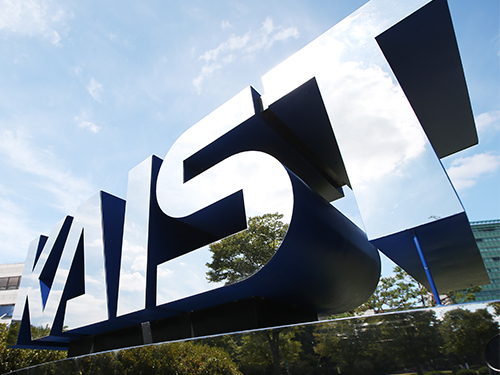 World Renowned Wireless Technology Experts Gathered in KAIST
KAIST hosted the 2015 IEEE WoW from June 5 to 6, 2015
Wireless power transfer technologies, such as wireless electric vehicles, trains and batteries, are increasingly in use. A conference, The 2015 IEEE WoW (Workshop on Wireless Power), was held in KI Building for two days starting June 5, 2015 to exchange ideas on the new trends and issues of the world wireless power technology.
The wireless power conference hosted by Institute of Electrical and Electronics Engineers (IEEE), IEEE WoW, was sponsored by its societies, PELS, IAS, IES, VTS, MAG, and PES.
This year’s conference took place in Korea for the first time and was titled “IEEE PELS Workshop on Emerging Technologies: Wireless Power.” The event was attended by around 200 experts in wireless power from 15 countries to discuss the international standards and current trends.
Keynote speakers were President Don Tan of IEEE; Professor Grant Covic of the University of Auckland; Andrew Daga, the CEO at Momentum Dynamics Corporation; Professor Ron Hui of the City University of Hong Kong; and Jung Goo Cho, the CEO of Green Power Technologies.
The forum included plenary speaking sessions on “The Futures of EV and Power Electronics,” “Development of IPT at the University of Auckland,” “Interoperable Solution for Wireless EV Charging,” “Development of IPT for Factory Automation,” “Commercialization of High Power WPT,” and “WPT: From Directional Power to Omni-directional Power.”
Notably, KAIST Professor Dong-Ho Cho, responsible for KAIST’s On-Line Electric Vehicle (OLEV) development, spoke on “The Development of Shaped Magnetic Field Systems for EVs and Trains” to introduce the KAIST OLEV bus and OLEV trains developed in cooperation with Korea Railroad Research Institute.
The Dialog Sessions on “The Futures of Wireless Electric Vehicles” were led by John M. Miller of JNJ Miller and “Road Charged EV and WPT Regulation and Standard for EV in Japan” by Yoichi Hori of University of Tokyo.
The General Chair of this year’s IEEE WoW, KAIST Professor Chun T. Rim said, “This forum serves a great assistance to the industry using wireless power technology in areas such as smartphones, home appliances, Internet of Things, and wearable devices.”
2015.05.29 View 9603
World Renowned Wireless Technology Experts Gathered in KAIST
KAIST hosted the 2015 IEEE WoW from June 5 to 6, 2015
Wireless power transfer technologies, such as wireless electric vehicles, trains and batteries, are increasingly in use. A conference, The 2015 IEEE WoW (Workshop on Wireless Power), was held in KI Building for two days starting June 5, 2015 to exchange ideas on the new trends and issues of the world wireless power technology.
The wireless power conference hosted by Institute of Electrical and Electronics Engineers (IEEE), IEEE WoW, was sponsored by its societies, PELS, IAS, IES, VTS, MAG, and PES.
This year’s conference took place in Korea for the first time and was titled “IEEE PELS Workshop on Emerging Technologies: Wireless Power.” The event was attended by around 200 experts in wireless power from 15 countries to discuss the international standards and current trends.
Keynote speakers were President Don Tan of IEEE; Professor Grant Covic of the University of Auckland; Andrew Daga, the CEO at Momentum Dynamics Corporation; Professor Ron Hui of the City University of Hong Kong; and Jung Goo Cho, the CEO of Green Power Technologies.
The forum included plenary speaking sessions on “The Futures of EV and Power Electronics,” “Development of IPT at the University of Auckland,” “Interoperable Solution for Wireless EV Charging,” “Development of IPT for Factory Automation,” “Commercialization of High Power WPT,” and “WPT: From Directional Power to Omni-directional Power.”
Notably, KAIST Professor Dong-Ho Cho, responsible for KAIST’s On-Line Electric Vehicle (OLEV) development, spoke on “The Development of Shaped Magnetic Field Systems for EVs and Trains” to introduce the KAIST OLEV bus and OLEV trains developed in cooperation with Korea Railroad Research Institute.
The Dialog Sessions on “The Futures of Wireless Electric Vehicles” were led by John M. Miller of JNJ Miller and “Road Charged EV and WPT Regulation and Standard for EV in Japan” by Yoichi Hori of University of Tokyo.
The General Chair of this year’s IEEE WoW, KAIST Professor Chun T. Rim said, “This forum serves a great assistance to the industry using wireless power technology in areas such as smartphones, home appliances, Internet of Things, and wearable devices.”
2015.05.29 View 9603 -
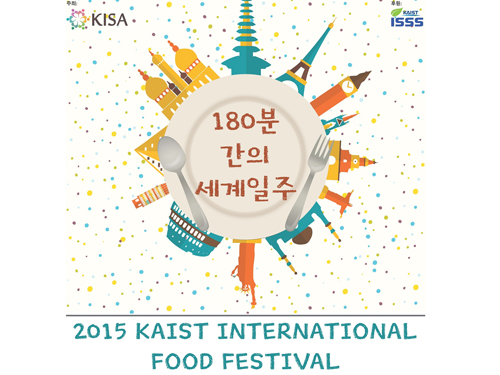 KAIST International Food Festival
The KAIST International Students Association (KISA) hosted the 2015 International Food Festival in front of Creative Learning Building, KAIST, on May 22, 2015.
This was the 11th International Food Festival for KAIST where international students introduced food from their home countries to strengthen cultural exchanges with Korean students. This year’s festival was the biggest international festival in Daejeon in which around 500 students and staff from KAIST, Chungnam National University (CNU), the University of Science & Technology (UST), and the public participated.
KAIST’s President Steve Kang opened the festival with a welcoming speech, followed by congratulatory speeches by CNU President Sang-Chul Jung and UST President Un-Woo Lee.
The first section of the event was the food festival where around 40 kinds of food from ten countries including Kenya, Kazakhstan, India, and Turkey were presented. Students from each country offered cooking demonstrations in booths, and participants purchased the food.
Cheryl Wanderi, a Kenyan student who recently received a Master’s degree from KAIST’s Department of Bio and Brain Engineering last February said, “I am delighted to introduce Mandazi, a Kenyan donut, to not only Korean students but also other international students.”
The second half of the event consisted of cultural performances from different countries. There were eight teams performing including an Indonesian traditional Saman dance team, a Kazakh group that performed on traditional instruments, and an Azerbaijani K-POP dance team.
Sung-Hyon Myaeng, the Associate Vice President of KAIST’s International Office, said, “Despite their busy lives, students from three different universities planned this event to get to know each other. I hope international students and Korean students can come together and enjoy the festival.”
Edrick Kwek, the President of KISA, said, “This food festival is an event showing the cultural diversity of KAIST in the most splendid way.”
2015.05.27 View 9988
KAIST International Food Festival
The KAIST International Students Association (KISA) hosted the 2015 International Food Festival in front of Creative Learning Building, KAIST, on May 22, 2015.
This was the 11th International Food Festival for KAIST where international students introduced food from their home countries to strengthen cultural exchanges with Korean students. This year’s festival was the biggest international festival in Daejeon in which around 500 students and staff from KAIST, Chungnam National University (CNU), the University of Science & Technology (UST), and the public participated.
KAIST’s President Steve Kang opened the festival with a welcoming speech, followed by congratulatory speeches by CNU President Sang-Chul Jung and UST President Un-Woo Lee.
The first section of the event was the food festival where around 40 kinds of food from ten countries including Kenya, Kazakhstan, India, and Turkey were presented. Students from each country offered cooking demonstrations in booths, and participants purchased the food.
Cheryl Wanderi, a Kenyan student who recently received a Master’s degree from KAIST’s Department of Bio and Brain Engineering last February said, “I am delighted to introduce Mandazi, a Kenyan donut, to not only Korean students but also other international students.”
The second half of the event consisted of cultural performances from different countries. There were eight teams performing including an Indonesian traditional Saman dance team, a Kazakh group that performed on traditional instruments, and an Azerbaijani K-POP dance team.
Sung-Hyon Myaeng, the Associate Vice President of KAIST’s International Office, said, “Despite their busy lives, students from three different universities planned this event to get to know each other. I hope international students and Korean students can come together and enjoy the festival.”
Edrick Kwek, the President of KISA, said, “This food festival is an event showing the cultural diversity of KAIST in the most splendid way.”
2015.05.27 View 9988 -
 KAIST and Audi Korea Sign a Memorandum of Understanding to Establish a Startup Incubator
For the next five years, Audi Korea will provide USD 250,000 for the startup program.
KAIST recently signed a memorandum of understanding (MOU) with Audi Korea to establish a student-led startup program, the Audi-KAIST Innovation Lounge, to promote design and product development on May 19, 2015, at the KAIST Institute of Entrepreneurship on campus.
Directed by Professor Sang-Min Bae of the Industrial Design Department (IDD), the Audi-KAIST Innovation Lounge will operate a global business incubator where IDD undergraduate and graduate students cultivate their entrepreneurship skills and explore business opportunities to develop commercially-applicable product designs. Audi Korea will invest USD 250,000 in the Innovation Lounge project for the next five years.
Students will receive support from the Lounge to turn their ideas, class assignments, and graduation theses into business products through a full cycle of the product development process such as inquiry, prototype development, and commercialization. The Lounge will also provide students with mentoring services from industry professionals and experts who can assist the students in finding design solutions and building prototypes using 3D printers.
The Dean of IDD, Kun-Pyo Lee, said, “Audi has been known for its initiatives which blend technological innovations into design. Likewise, our department offers students an integrative approach to design education and research which incorporates human factors and technology as important features in the design process. I believe that the Audi-KAIST Innovation Lounge will help us lead such efforts in the future.”
Professor Bae added, “This MOU is quite significant because it shows an excellent collaboration between academia and industry. Ideas created in universities should not be left to languish as just an idea or research. Rather, they should be utilized as ways to serve the needs of our society, and to do so, it is important for the government and companies to pay more attention to these interactions taking place between academia and private sectors.”
The Head of Marketing at Audi Korea, Jorg Dietzel, said, “As seen in our corporate slogan, "Advancement through Technology," Audi has grown through numerous technological innovations. I hope Audi Korea can contribute to the support of KAIST students from the Industrial Design Department to realize their dreams as future entrepreneurs and bring more innovative ideas to their field.”
Picture: Jorg Dietzel (fifth from the left), the Head of Marketing at Audi Korea, and Kun-Pyo Lee (sixth from the left), the Dean of Industrial Design Department, KAIST, pose together right after signing an agreement to create the Audi-KAIST Innovation Lounge on May 19, 2015.
2015.05.22 View 9703
KAIST and Audi Korea Sign a Memorandum of Understanding to Establish a Startup Incubator
For the next five years, Audi Korea will provide USD 250,000 for the startup program.
KAIST recently signed a memorandum of understanding (MOU) with Audi Korea to establish a student-led startup program, the Audi-KAIST Innovation Lounge, to promote design and product development on May 19, 2015, at the KAIST Institute of Entrepreneurship on campus.
Directed by Professor Sang-Min Bae of the Industrial Design Department (IDD), the Audi-KAIST Innovation Lounge will operate a global business incubator where IDD undergraduate and graduate students cultivate their entrepreneurship skills and explore business opportunities to develop commercially-applicable product designs. Audi Korea will invest USD 250,000 in the Innovation Lounge project for the next five years.
Students will receive support from the Lounge to turn their ideas, class assignments, and graduation theses into business products through a full cycle of the product development process such as inquiry, prototype development, and commercialization. The Lounge will also provide students with mentoring services from industry professionals and experts who can assist the students in finding design solutions and building prototypes using 3D printers.
The Dean of IDD, Kun-Pyo Lee, said, “Audi has been known for its initiatives which blend technological innovations into design. Likewise, our department offers students an integrative approach to design education and research which incorporates human factors and technology as important features in the design process. I believe that the Audi-KAIST Innovation Lounge will help us lead such efforts in the future.”
Professor Bae added, “This MOU is quite significant because it shows an excellent collaboration between academia and industry. Ideas created in universities should not be left to languish as just an idea or research. Rather, they should be utilized as ways to serve the needs of our society, and to do so, it is important for the government and companies to pay more attention to these interactions taking place between academia and private sectors.”
The Head of Marketing at Audi Korea, Jorg Dietzel, said, “As seen in our corporate slogan, "Advancement through Technology," Audi has grown through numerous technological innovations. I hope Audi Korea can contribute to the support of KAIST students from the Industrial Design Department to realize their dreams as future entrepreneurs and bring more innovative ideas to their field.”
Picture: Jorg Dietzel (fifth from the left), the Head of Marketing at Audi Korea, and Kun-Pyo Lee (sixth from the left), the Dean of Industrial Design Department, KAIST, pose together right after signing an agreement to create the Audi-KAIST Innovation Lounge on May 19, 2015.
2015.05.22 View 9703 -
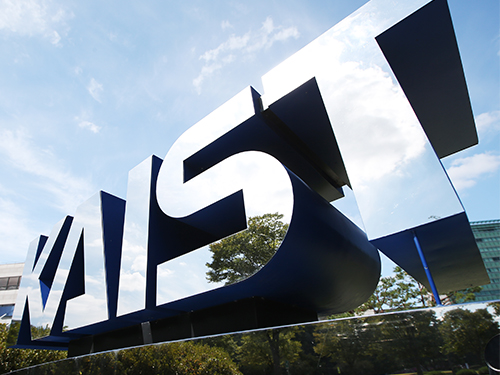 KAIST to Host Conference on the Financial Technology Industry
To take place in the Korea Federation of Banks building on May 21, 2015, Seoul
Around 200 individuals to be present including Oh-Kyu Kwon, the former Minister of Finance and Economy and Chang-Hyun Yun, the former president of Korea Institute of Finance
KAIST will hold a conference to discuss prospects for Korea’s financial technology industry (FinTech) and to address the rapid changes taking place in both national and global finance markets.
The conference will be held in the Convention Hall of the Korea Federation of Banks building in Myeongdong, Seoul on May 21, 2015 with a theme entitled “The Challenge and the Task of Korean FinTech Industry in the Global Finance Market.”
Around 200 individuals including Oh-Kyu Kwon, the former Minister of Finance and Economy, Jiwon Jung, a member of a standing committee of Financial Services Commission, and Steve Kang, the President of KAIST will attend the meeting.
The term “FinTech” originates from the combination of two words, finance and technology, to describe a new form of financial system based on Information Technology (IT). The precise definition and boundary of FinTech is not fully established yet, but this will provide Korea with an opportunity to take the lead in the finance industry with its cutting-edge IT.
The conference will focus on the methods by which Korean FinTech companies can acquire a competitive edge in the global finance market. The keynote speaker, Tong-Suk Kim, the Dean of College of Business, KAIST, will speak about “The Challenge and the Task of Korean FinTech.” The talk will emphasize how the FinTech industry can create an innovative industry, destroying the existing paradigm of payment system and Internet-only banks.
The keynote speech will be followed by a talk on “The Requirements for Establishing Korean FinTech Ecosystem” by Jong-Hyun Kim, a researcher at Woori Finance Research Institute, Korea.
Additional talks, which will be given by KAIST professors, are:
“Korean Economy and the Role of FinTech” by Professor Young-Sun Kwon of the Department Business and Technology Management;
“Korean FinTech in ICT Perspective” by Professor Yoon-Joon Lee of the Department of Computer Science;
“The Current State and Possibilities of Korean FinTech” by Professor Byung-Tae Lee of the School of Management Engineering; and
“The Task and Challenge of Promoting FinTech Industry” by Professor Byung-Chun Kim of the School of Management Engineering.
Also, Professor Chang-Hyun Yoon of the School of Business Administration, University of Seoul, will give a talk on “The Crisis in Korean Finance Industry and the Role of FinTech.”
The conference will also hold a discussion session on “The Promotion Methods for Korean FinTech Industry.” Participants for the discussion will include Jae-Sung Song from the Ministry of Science, ICT and Future Planning, Dong-Hwan Kim from the Financial Services Commission, Jeon Jin from Samsung Economic Research Institute (SERI), Hyo-Jin Lee of 8Percent, In-Chang Hwang from the Korea Insurance Research Institute, and Jae-Kyu Lee from Koscom.
Byung-Chun Kim, the Director of KAIST’s Financial Engineering Research Center, who organized the FinTech conference said, “FinTech industry will evolve from simply attempting to attract consumers to understanding the lifestyle patterns of consumers to provide customized service and information.”
2015.05.20 View 9883
KAIST to Host Conference on the Financial Technology Industry
To take place in the Korea Federation of Banks building on May 21, 2015, Seoul
Around 200 individuals to be present including Oh-Kyu Kwon, the former Minister of Finance and Economy and Chang-Hyun Yun, the former president of Korea Institute of Finance
KAIST will hold a conference to discuss prospects for Korea’s financial technology industry (FinTech) and to address the rapid changes taking place in both national and global finance markets.
The conference will be held in the Convention Hall of the Korea Federation of Banks building in Myeongdong, Seoul on May 21, 2015 with a theme entitled “The Challenge and the Task of Korean FinTech Industry in the Global Finance Market.”
Around 200 individuals including Oh-Kyu Kwon, the former Minister of Finance and Economy, Jiwon Jung, a member of a standing committee of Financial Services Commission, and Steve Kang, the President of KAIST will attend the meeting.
The term “FinTech” originates from the combination of two words, finance and technology, to describe a new form of financial system based on Information Technology (IT). The precise definition and boundary of FinTech is not fully established yet, but this will provide Korea with an opportunity to take the lead in the finance industry with its cutting-edge IT.
The conference will focus on the methods by which Korean FinTech companies can acquire a competitive edge in the global finance market. The keynote speaker, Tong-Suk Kim, the Dean of College of Business, KAIST, will speak about “The Challenge and the Task of Korean FinTech.” The talk will emphasize how the FinTech industry can create an innovative industry, destroying the existing paradigm of payment system and Internet-only banks.
The keynote speech will be followed by a talk on “The Requirements for Establishing Korean FinTech Ecosystem” by Jong-Hyun Kim, a researcher at Woori Finance Research Institute, Korea.
Additional talks, which will be given by KAIST professors, are:
“Korean Economy and the Role of FinTech” by Professor Young-Sun Kwon of the Department Business and Technology Management;
“Korean FinTech in ICT Perspective” by Professor Yoon-Joon Lee of the Department of Computer Science;
“The Current State and Possibilities of Korean FinTech” by Professor Byung-Tae Lee of the School of Management Engineering; and
“The Task and Challenge of Promoting FinTech Industry” by Professor Byung-Chun Kim of the School of Management Engineering.
Also, Professor Chang-Hyun Yoon of the School of Business Administration, University of Seoul, will give a talk on “The Crisis in Korean Finance Industry and the Role of FinTech.”
The conference will also hold a discussion session on “The Promotion Methods for Korean FinTech Industry.” Participants for the discussion will include Jae-Sung Song from the Ministry of Science, ICT and Future Planning, Dong-Hwan Kim from the Financial Services Commission, Jeon Jin from Samsung Economic Research Institute (SERI), Hyo-Jin Lee of 8Percent, In-Chang Hwang from the Korea Insurance Research Institute, and Jae-Kyu Lee from Koscom.
Byung-Chun Kim, the Director of KAIST’s Financial Engineering Research Center, who organized the FinTech conference said, “FinTech industry will evolve from simply attempting to attract consumers to understanding the lifestyle patterns of consumers to provide customized service and information.”
2015.05.20 View 9883 -
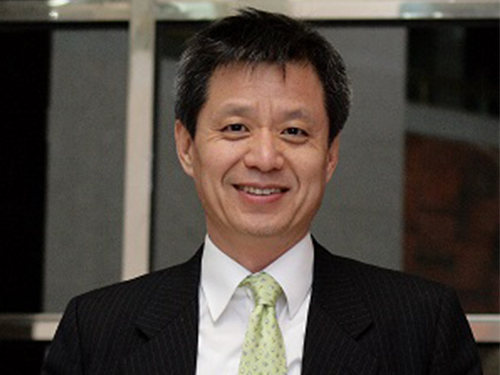 Professor Duck-Joo Lee Is Elected Vice Chairman of the American Helicopter Society
Professor Duck-Joo Lee of the Department of Aerospace Engineering at KAIST was elected to become the first Korean vice president of the American Helicopter Society (AHS). He will serve a two-year term, starting this July, and his responsibilities will cover Asia, Australia, and Russia.
AHS, established in 1943, is the biggest association in the field with 6,800 members. The society is intended to advance helicopter technology and vertical take-off and landing (VTOL) in airplane technology.
The AHS’s board of directors consists of thirty experts in rotorcrafts, including the president of Sikorsky Aircraft Corporation, a renowned American helicopter manufacturing company.
Professor Lee started his career as a researcher in NASA Ames Research Center in the United States, and is now an acknowledged scholar in the field of aircraft jet engines and helicopter Aero-Acoustics. He also worked as the Assistant Editor-in-Chief of Journal of the American Helicopter Society, the President of the first Asia-Australia Rotorcraft Forum, and the leader of National Task Force Team of Korean Military and Civil Helicopter.
2015.05.18 View 8378
Professor Duck-Joo Lee Is Elected Vice Chairman of the American Helicopter Society
Professor Duck-Joo Lee of the Department of Aerospace Engineering at KAIST was elected to become the first Korean vice president of the American Helicopter Society (AHS). He will serve a two-year term, starting this July, and his responsibilities will cover Asia, Australia, and Russia.
AHS, established in 1943, is the biggest association in the field with 6,800 members. The society is intended to advance helicopter technology and vertical take-off and landing (VTOL) in airplane technology.
The AHS’s board of directors consists of thirty experts in rotorcrafts, including the president of Sikorsky Aircraft Corporation, a renowned American helicopter manufacturing company.
Professor Lee started his career as a researcher in NASA Ames Research Center in the United States, and is now an acknowledged scholar in the field of aircraft jet engines and helicopter Aero-Acoustics. He also worked as the Assistant Editor-in-Chief of Journal of the American Helicopter Society, the President of the first Asia-Australia Rotorcraft Forum, and the leader of National Task Force Team of Korean Military and Civil Helicopter.
2015.05.18 View 8378 -
 KAIST Hosts the Wearable Computer Contest 2015
Deadlines for Prototype Contest by May 30, 2015 and August 15 for Idea Contest
KAIST will hold the Wearable Computer Contest 2015 in November, which will be sponsored by Samsung Electronics Co., Ltd.
Wearable computers have emerged as next-generation mobile devices, and are gaining more popularity with the growth of the Internet of Things. KAIST has introduced wearable devices such as K-Glass 2, a smart glass with augmented reality embedded. The Glass also works on commands by blinking eyes.
This year’s contest with the theme of “Wearable Computers for Internet of Things” is divided into two parts: the Prototype Competition and Idea Contest.
With the fusion of information technology (IT) and fashion, contestants are encouraged to submit prototypes of their ideas by May 30, 2015. The ten teams that make it to the finals will receive a wearable computer platform and Human-Computer Interaction (HCI) education, along with a prize of USD 1,000 for prototype production costs. The winner of the Prototype Contest will receive a prize of USD 5,000 and an award from the Minister of Science, ICT and Future Planning (MSIP) of the Republic of Korea.
In the Idea Contest, posters containing ideas and concepts of wearable devices should be submitted by August 15, 2015. The teams that make it to the finals will have to display a life-size mockup in the final stage. The winner of the contest will receive a prize of USD 1,000 and an award from the Minister of MSIP.
Any undergraduate or graduate student in Korea can enter the Prototype Competition and anyone can participate in the Idea Contest.
The chairman of the event, Hoi-Jun Yoo, a professor of the Department of Electrical Engineering at KAIST, noted:
“There is a growing interest in wearable computers in the industry. I can easily envisage that there will be a new IT world where wearable computers are integrated into the Internet of Things, healthcare, and smart homes.”
More information on the contest can be found online at http://www.ufcom.org.
Picture: Finalists in the last year’s contest
2015.05.11 View 8219
KAIST Hosts the Wearable Computer Contest 2015
Deadlines for Prototype Contest by May 30, 2015 and August 15 for Idea Contest
KAIST will hold the Wearable Computer Contest 2015 in November, which will be sponsored by Samsung Electronics Co., Ltd.
Wearable computers have emerged as next-generation mobile devices, and are gaining more popularity with the growth of the Internet of Things. KAIST has introduced wearable devices such as K-Glass 2, a smart glass with augmented reality embedded. The Glass also works on commands by blinking eyes.
This year’s contest with the theme of “Wearable Computers for Internet of Things” is divided into two parts: the Prototype Competition and Idea Contest.
With the fusion of information technology (IT) and fashion, contestants are encouraged to submit prototypes of their ideas by May 30, 2015. The ten teams that make it to the finals will receive a wearable computer platform and Human-Computer Interaction (HCI) education, along with a prize of USD 1,000 for prototype production costs. The winner of the Prototype Contest will receive a prize of USD 5,000 and an award from the Minister of Science, ICT and Future Planning (MSIP) of the Republic of Korea.
In the Idea Contest, posters containing ideas and concepts of wearable devices should be submitted by August 15, 2015. The teams that make it to the finals will have to display a life-size mockup in the final stage. The winner of the contest will receive a prize of USD 1,000 and an award from the Minister of MSIP.
Any undergraduate or graduate student in Korea can enter the Prototype Competition and anyone can participate in the Idea Contest.
The chairman of the event, Hoi-Jun Yoo, a professor of the Department of Electrical Engineering at KAIST, noted:
“There is a growing interest in wearable computers in the industry. I can easily envisage that there will be a new IT world where wearable computers are integrated into the Internet of Things, healthcare, and smart homes.”
More information on the contest can be found online at http://www.ufcom.org.
Picture: Finalists in the last year’s contest
2015.05.11 View 8219 -
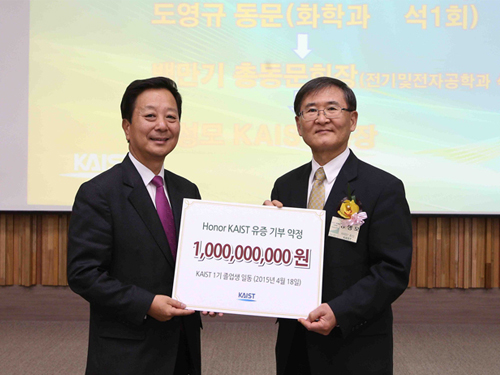 KAIST's Alumni Announces Its Vision to Raise Development Funds
The 40th anniversary of the Graduation and Homecoming Day took place at Seoul campus on April 18, 2015.
KAIST’s alumni announced its long-term vision called “Honor KAIST” to raise the development fund of USD 1 billion by 2100 at the 40th anniversary of “The First Master’s Graduation and Homecoming Day.” The anniversary ceremony took place at the Seoul campus on April 18, 2015. President Steve Kang, Man-Ki Paik, President of KAIST Alumni Association, and the first graduates of KAIST master’s program attended the event.
The first 106 master’s graduates of KAIST, the Class of 1975, received their degrees from eight departments. About 18 professors, including Dr. KunMo Chung, who taught the Class of 1975, and 52 graduates such as Suk-Joong Kang, Sik-Chol Kwon, Youngkyu Do, Sung Joo Park, Joon-Taik Park, Hyung-Kang Shin, Dong-Yol Yang, Seong Ihl Woo, Jae Kyu Lee, In-Won Lee, Byoung-Kyu Choi, and Kyu-Young Hwang participated in the homecoming event that proceeded with the tour of Seoul campus and the ceremony to deliver the first donation by the graduates.
The graduates involved in the vision campaign declared: “KAIST graduates have great pride in having taken part in advancing science and technology in Korea and are grateful for the education given by the nation. There is still a long way ahead for KAIST and Korea. The alumni should work together to help shaping the future of KAIST with great interest and affection for the institution.” They also urged KAIST graduates to donate more for their alma mater: “Let us try to participate in donating USD 100,000 in our lifetime!” The graduates added, “Having donations up to USD 1 billion helped MIT become a great university. We should take the lead in aiming to collect such amount by 2100 for KAIST.”
President Kang addressed the ceremony and said in his speech, “The Honor KAIST Development Funds will serve as the foundation for the university’s continuous, strong growth. Every member of KAIST will work in harmony to transfer KAIST into one of the top ten research universities in the world.” He continued, “The funds will be used to further future strategies of KAIST such as high impact Nobel-prize level research and innovative education.”
Contributors will receive benefits including an honorary lifetime email account entitled “Honor.KAIST” and will have their names listed on “The Honor KAIST” website and “The Honor KAIST” commemorative wall.
Picture 1: The First Master’s Graduation and Homecoming Day 2015
Picture 2: President Steve Kang (right) and President Man-Ki Paik of the KAIST Alumni Association
2015.04.22 View 8875
KAIST's Alumni Announces Its Vision to Raise Development Funds
The 40th anniversary of the Graduation and Homecoming Day took place at Seoul campus on April 18, 2015.
KAIST’s alumni announced its long-term vision called “Honor KAIST” to raise the development fund of USD 1 billion by 2100 at the 40th anniversary of “The First Master’s Graduation and Homecoming Day.” The anniversary ceremony took place at the Seoul campus on April 18, 2015. President Steve Kang, Man-Ki Paik, President of KAIST Alumni Association, and the first graduates of KAIST master’s program attended the event.
The first 106 master’s graduates of KAIST, the Class of 1975, received their degrees from eight departments. About 18 professors, including Dr. KunMo Chung, who taught the Class of 1975, and 52 graduates such as Suk-Joong Kang, Sik-Chol Kwon, Youngkyu Do, Sung Joo Park, Joon-Taik Park, Hyung-Kang Shin, Dong-Yol Yang, Seong Ihl Woo, Jae Kyu Lee, In-Won Lee, Byoung-Kyu Choi, and Kyu-Young Hwang participated in the homecoming event that proceeded with the tour of Seoul campus and the ceremony to deliver the first donation by the graduates.
The graduates involved in the vision campaign declared: “KAIST graduates have great pride in having taken part in advancing science and technology in Korea and are grateful for the education given by the nation. There is still a long way ahead for KAIST and Korea. The alumni should work together to help shaping the future of KAIST with great interest and affection for the institution.” They also urged KAIST graduates to donate more for their alma mater: “Let us try to participate in donating USD 100,000 in our lifetime!” The graduates added, “Having donations up to USD 1 billion helped MIT become a great university. We should take the lead in aiming to collect such amount by 2100 for KAIST.”
President Kang addressed the ceremony and said in his speech, “The Honor KAIST Development Funds will serve as the foundation for the university’s continuous, strong growth. Every member of KAIST will work in harmony to transfer KAIST into one of the top ten research universities in the world.” He continued, “The funds will be used to further future strategies of KAIST such as high impact Nobel-prize level research and innovative education.”
Contributors will receive benefits including an honorary lifetime email account entitled “Honor.KAIST” and will have their names listed on “The Honor KAIST” website and “The Honor KAIST” commemorative wall.
Picture 1: The First Master’s Graduation and Homecoming Day 2015
Picture 2: President Steve Kang (right) and President Man-Ki Paik of the KAIST Alumni Association
2015.04.22 View 8875 -
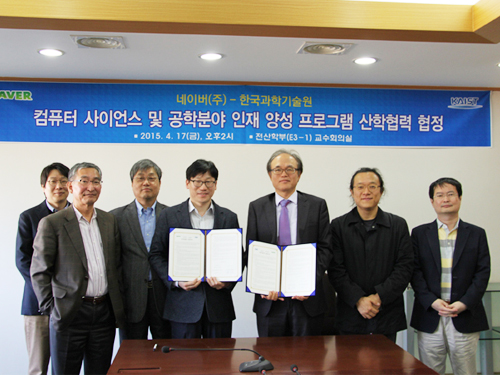 KAIST and the Naver Corporation Agree to Cooperate in Computer Science
KAIST and Naver, a Korean Internet corporation, concluded a memorandum of understanding (MOU) on April 17, 2015, to cooperate in advancing research and education in computer science.
Doo-Hwan Bae (pictured on the right below), the Dean of School of Computing at KAIST and Jong-Mok Park (pictured on left), the Director of Technical Cooperation at Naver, signed the MOU.
Under this agreement, the two organizations will foster computer scientists and engineers, conduct joint research projects, and develop training programs for entrepreneurs.
KAIST and Naver will organize a steering committee to lay out further details on the agreement.
2015.04.17 View 8271
KAIST and the Naver Corporation Agree to Cooperate in Computer Science
KAIST and Naver, a Korean Internet corporation, concluded a memorandum of understanding (MOU) on April 17, 2015, to cooperate in advancing research and education in computer science.
Doo-Hwan Bae (pictured on the right below), the Dean of School of Computing at KAIST and Jong-Mok Park (pictured on left), the Director of Technical Cooperation at Naver, signed the MOU.
Under this agreement, the two organizations will foster computer scientists and engineers, conduct joint research projects, and develop training programs for entrepreneurs.
KAIST and Naver will organize a steering committee to lay out further details on the agreement.
2015.04.17 View 8271 -
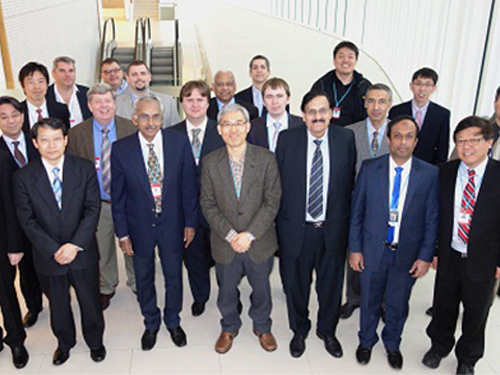 Professor Rim Presents at IAEA Workshop in Vienna
Professor Chun-Taek Rim of the Department of Nuclear and Quantum Engineering at KAIST recently attended the International Atomic Energy Agency (IAEA)’s workshop on the Application of Wireless Technologies in Nuclear Power Plant Instrumentation and Control System. It took place on March 30-April 2, 2015, in Vienna, Austria.
Representing Korea, Professor Rim gave a talk entitled “Highly Reliable Wireless Power and Communications under Severe Accident of Nuclear Power Plants (NPPs).” About 20 industry experts from 12 countries such as AREVA (France), Westinghouse (US), Oak Ridge National Laboratory (US), Hitachi (Japan), and ENEA (Italy) joined the meeting.
The IAEA hosted the workshop to explore the application of wireless technology for the operation and management of NPPs. It formed a committee consisting of eminent professionals worldwide in NPP instrumentation and control systems, communications, and nuclear power to examine this issue in-depth and to conduct various research projects for the next three years.
In particular, the committee will concentrate its research on improving the reliability and safety of using wireless technology, not only in the normal operation of nuclear plants but also in extreme conditions such as the Fukushima Daiichi nuclear accident. The complementation, economic feasibility, and standardization of NPPs when applying wireless technology will be also discussed.
Professor Rim currently leads the Nuclear Power Electronics
and Robotics Lab at KAIST (http://tesla.kaist.ac.kr/index_eng.php?lag=eng).
Picture 1: Professors Rim presents his topic at the IAEA Workshop in Vienna.
Picture 2: The IAEA Workshop Participants
2015.04.07 View 12895
Professor Rim Presents at IAEA Workshop in Vienna
Professor Chun-Taek Rim of the Department of Nuclear and Quantum Engineering at KAIST recently attended the International Atomic Energy Agency (IAEA)’s workshop on the Application of Wireless Technologies in Nuclear Power Plant Instrumentation and Control System. It took place on March 30-April 2, 2015, in Vienna, Austria.
Representing Korea, Professor Rim gave a talk entitled “Highly Reliable Wireless Power and Communications under Severe Accident of Nuclear Power Plants (NPPs).” About 20 industry experts from 12 countries such as AREVA (France), Westinghouse (US), Oak Ridge National Laboratory (US), Hitachi (Japan), and ENEA (Italy) joined the meeting.
The IAEA hosted the workshop to explore the application of wireless technology for the operation and management of NPPs. It formed a committee consisting of eminent professionals worldwide in NPP instrumentation and control systems, communications, and nuclear power to examine this issue in-depth and to conduct various research projects for the next three years.
In particular, the committee will concentrate its research on improving the reliability and safety of using wireless technology, not only in the normal operation of nuclear plants but also in extreme conditions such as the Fukushima Daiichi nuclear accident. The complementation, economic feasibility, and standardization of NPPs when applying wireless technology will be also discussed.
Professor Rim currently leads the Nuclear Power Electronics
and Robotics Lab at KAIST (http://tesla.kaist.ac.kr/index_eng.php?lag=eng).
Picture 1: Professors Rim presents his topic at the IAEA Workshop in Vienna.
Picture 2: The IAEA Workshop Participants
2015.04.07 View 12895 -
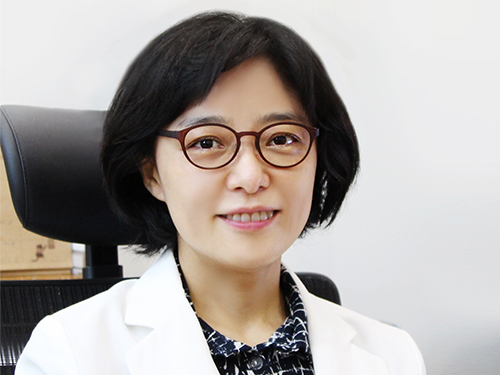 KAIST Clinic's Dr. Joo-yeon Kim Receives Minister's Award
Dr. Joo-yeon Kim receives citation on “The Fifth Tuberculosis Prevention Day” for her contribution to campus tuberculosis outbreak prevention.
Dr. Joo-Yeon Kim, the general manager of medical services of KAIST Clinic, received an award from the Korean Ministry of Health and Welfare on March 24, 2015. The award ceremony took place during “The Fifth Tuberculosis Prevention Day,” hosted by the Ministry of Health and Welfare and supervised by the Korea Centers for Disease Control and Prevention. The event was held at Seoul Sejong Cultural Center with 300 distinguished guests in attendance including the Minister of Health and Welfare, the Committee Members of the National Assembly Health and Welfare Committee, and the Director of Korea Centers for Disease Control Prevention.
The award acknowledges Dr. Kim’s contribution to curbing a tuberculosis (TB) outbreak on KAIST’s campus in 2013. In cooperation with the Infectious Disease Prevention Committee in KAIST, Korea Centers for Disease Control and Prevention, and Yuseong Public Health Centre, Dr. Kim’s swift treatment and rigorous control of both TB and latent TB patients prevented further outbreaks.
The KAIST Clinic is the first university-affiliated clinic established in September 2010 after Neil Pappalardo, the President of MEDITEC in the US, donated $2.5 million to KAIST. It is currently running 10 medical departments including those in family medicine, stress clinic, and dentistry to provide medical care to students and staff.
Every March 24 marks the annual “Tuberculosis Prevention Day” and “World Tuberculosis Day.” The “World Tuberculosis Day” was established in 1982 to promote TB prevention and early detection. It commemorated the 100th year anniversary of the discovery of M. tuberculosis on March 24, 1883 by the German bacteriologist Robert Koch.
According to the TB Prevention Act (Article 4), Korea marks “The Tuberculosis Prevention Day” alongside the “World Tuberculosis Day” on March 24 to raise public awareness of the magnitude of the disease and the importance of prevention.
2015.03.25 View 8571
KAIST Clinic's Dr. Joo-yeon Kim Receives Minister's Award
Dr. Joo-yeon Kim receives citation on “The Fifth Tuberculosis Prevention Day” for her contribution to campus tuberculosis outbreak prevention.
Dr. Joo-Yeon Kim, the general manager of medical services of KAIST Clinic, received an award from the Korean Ministry of Health and Welfare on March 24, 2015. The award ceremony took place during “The Fifth Tuberculosis Prevention Day,” hosted by the Ministry of Health and Welfare and supervised by the Korea Centers for Disease Control and Prevention. The event was held at Seoul Sejong Cultural Center with 300 distinguished guests in attendance including the Minister of Health and Welfare, the Committee Members of the National Assembly Health and Welfare Committee, and the Director of Korea Centers for Disease Control Prevention.
The award acknowledges Dr. Kim’s contribution to curbing a tuberculosis (TB) outbreak on KAIST’s campus in 2013. In cooperation with the Infectious Disease Prevention Committee in KAIST, Korea Centers for Disease Control and Prevention, and Yuseong Public Health Centre, Dr. Kim’s swift treatment and rigorous control of both TB and latent TB patients prevented further outbreaks.
The KAIST Clinic is the first university-affiliated clinic established in September 2010 after Neil Pappalardo, the President of MEDITEC in the US, donated $2.5 million to KAIST. It is currently running 10 medical departments including those in family medicine, stress clinic, and dentistry to provide medical care to students and staff.
Every March 24 marks the annual “Tuberculosis Prevention Day” and “World Tuberculosis Day.” The “World Tuberculosis Day” was established in 1982 to promote TB prevention and early detection. It commemorated the 100th year anniversary of the discovery of M. tuberculosis on March 24, 1883 by the German bacteriologist Robert Koch.
According to the TB Prevention Act (Article 4), Korea marks “The Tuberculosis Prevention Day” alongside the “World Tuberculosis Day” on March 24 to raise public awareness of the magnitude of the disease and the importance of prevention.
2015.03.25 View 8571